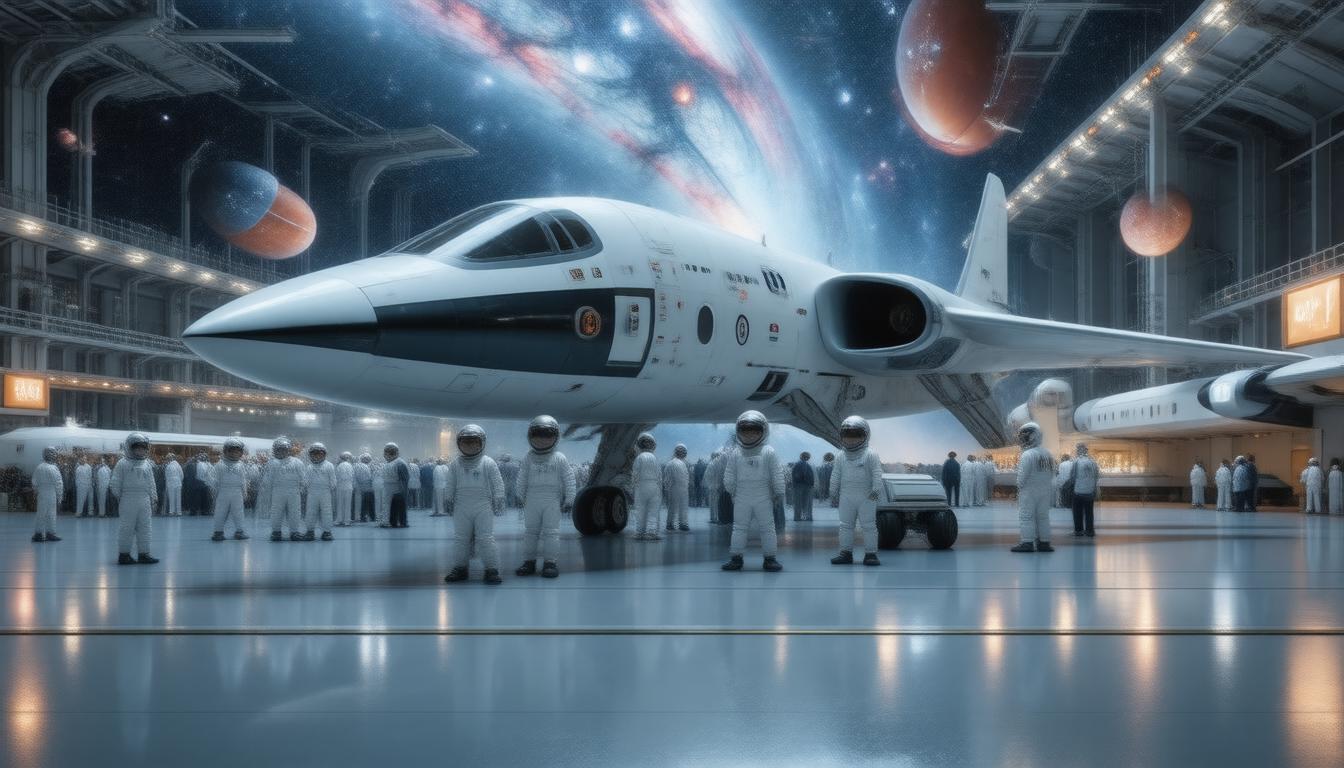Propulsion is at the heart of modern aerospace technology, propelling aircraft and spacecraft to new heights and enabling groundbreaking advancements in travel and exploration. As the aviation and space industries continue to evolve, a deep dive into the evolution of propulsion technologies reveals not only where we are today but also the exciting innovations on the horizon. From turbojet engines to electric propulsion systems, the journey of propulsion technology is a testament to human ingenuity. In this article, we will explore key innovations shaping the future of propulsion, examine sustainable solutions that promise to revolutionize the industry, and discuss the challenges and opportunities that lie ahead in the realm of modern aerospace propulsion.
Topics
- The aerospace industry has seen significant advancements in propulsion technologies over the decades.
- Innovations such as electric propulsion and hybrid systems are revolutionizing aircraft efficiency and performance.
- Sustainable propulsion solutions are becoming increasingly critical in the push for greener aviation.
- Modern aerospace faces various challenges including regulatory hurdles and technological integration.
- Opportunities abound for growth and innovation in the propulsion sector as demand for air travel continues to rise.
The Evolution of Propulsion Technologies in Aerospace
The evolution of propulsion technologies in aerospace has been a remarkable journey that reflects human ingenuity and the relentless pursuit of efficiency and speed. From the early days of the jet engine to the cutting-edge innovations we see today, propulsion has undergone transformative changes that have propelled aircraft further and faster than ever before. Initially, aircraft relied on piston engines, which were effective but limited in altitude and speed. The introduction of turbojet engines in the mid-20th century marked a significant turning point, enabling commercial jets to ascend to cruising altitudes above weather disturbances and significantly reduce travel times. Today, advancements such as turbofan engines and alternative propulsion systems, including electric and hybrid-electric technologies, are reshaping the landscape of aerospace propulsion. These modern innovations not only aim to improve fuel efficiency and reduce carbon emissions but also enhance overall performance and safety in aviation. As we look to the future, advancements in propulsion will be crucial in addressing the challenges of growing air traffic and environmental sustainability, making ongoing research and development in this field more important than ever.
Key Innovations Shaping the Future of Propulsion
In recent years, the realm of propulsion has witnessed groundbreaking innovations that are set to redefine how we approach transportation, be it in aviation, maritime, or space exploration. Key advancements include electric and hybrid propulsion systems that promise to reduce emissions and improve fuel efficiency, marking a significant shift towards sustainability in the aviation industry. Furthermore, companies are investing heavily in the development of advanced rocket propulsion systems, such as reusable rockets and ion thrusters, which enhance the viability of space travel and exploration. Additionally, the integration of artificial intelligence in propulsion systems is optimizing operational efficiency, allowing for smarter flight paths and optimized fuel consumption. As we look to the future, these innovations in propulsion not only demonstrate a commitment to improving performance and safety but also highlight the industry’s urgent need to embrace greener technologies for a sustainable tomorrow. By harnessing these cutting-edge technologies, we are paving the way for a new era in global transportation.
‘The future belongs to those who believe in the beauty of their dreams.’ – Eleanor Roosevelt
Sustainable Propulsion Solutions: The Next Frontier
As the world increasingly prioritizes sustainability, the realm of propulsion is experiencing a transformative shift towards greener technologies. Sustainable propulsion solutions are emerging as the next frontier in various industries, particularly within aerospace and maritime sectors. Innovations such as electric propulsion systems, hybrid engines, and biofuels are redefining how we think about transportation, reducing carbon emissions, and enhancing efficiency. For example, electric propulsion not only minimizes the environmental impact but also lowers operational costs, making it an attractive option for commercial airlines and shipping companies alike. Additionally, advancements in hydrogen fuel cells are creating buzz as a powerful alternative, promising zero-carbon travel. As governments and organizations worldwide emphasize the urgency of climate change, investing in sustainable propulsion technologies has become vital. By adopting these innovative propulsion systems, we are not only preparing for a cleaner future but also driving the economy towards new opportunities in engineering and technology development.
Challenges and Opportunities in Modern Aerospace Propulsion
The field of aerospace propulsion is undergoing a transformative evolution, driven by both challenges and opportunities that redefine how we approach air and space travel. One of the primary challenges lies in addressing environmental concerns, as the aviation industry grapples with its carbon footprint amidst growing climate change awareness. This presents an opportunity for innovation, particularly in the development of sustainable propulsion systems, such as hybrid-electric and hydrogen fuel technologies, that promise to significantly reduce emissions. Moreover, as demand for faster travel increases, propulsion engineers are pushed to enhance the performance of both traditional jet engines and emerging technologies like supersonic and scramjet capabilities. The integration of advanced materials and digital tools, including artificial intelligence for real-time performance monitoring, also presents exciting opportunities to optimize propulsion systems for efficiency and reliability. As we navigate these complexities, the pursuit of next-generation propulsion solutions remains a critical focus for ensuring a sustainable future in aerospace.
Improve your professional profile AND do your part to contribute and advance human civilization by becoming a member today.



